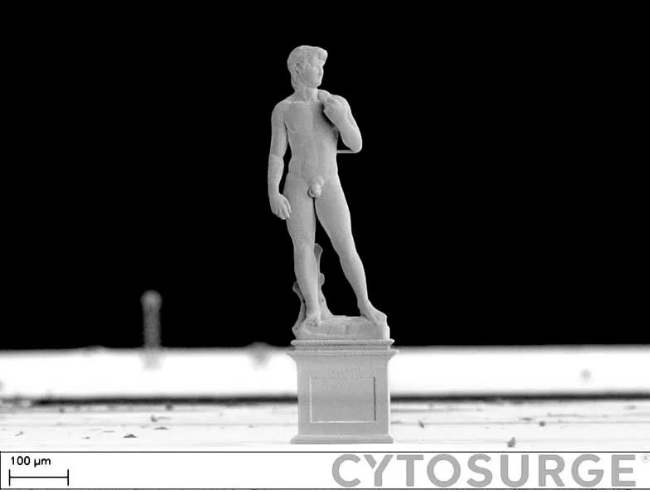Swiss micro 3D printing company Cytosurge has announced a new spin-off organization responsible for additive manufacturing of micro metal parts.
Edgar Hepp, Business Development Manager at Cytosurge, will act as CEO of the new entity which is operating under the name Exaddon. Dr. Pascal Behr, CEO of Cytosurge explained:
“Given the unique nature of the additive manufacturing business and specific requirements of our key target markets such as the semiconductor industry, we are convinced that an independent company can realize the high growth opportunities in this emerging market much better if it can focus entirely on this key goal.”

FluidFM technology
Originating from a team of researchers at ETH Zurich, Cytosurge, established in 2009, developed FluidFM 3D printing technology to fabricate metal parts. This method involves electrodeposition and a chemical reaction between inks containing metallic particles and their contact with the print bed.
The company’s FluidFM µ3Dprinter was used to recreate Michelangelo’s David at a scale comparable to the width of just seven human hairs. This micro masterpiece is the largest object Cytosurge has ever made measuring approximately 200 x 200 x 700 µm (L x W x H). This technology has also been applied to create microscopic impossible objects pushing the boundaries of optical physics.
Hepp added, “We have developed a ground-breaking manufacturing technology and have brought it to market maturity. It enables our clients to additively manufacture high-end products at an unprecedented level.”
“Exaddon is now responsible for all Cytosurge AG projects related to additive manufacturing and will continue to manage and develop them.”

Exaddon and CERES technology
Exaddon is using a 3D metal printing solution, CERES, that prints with nanometer resolution tiny objects in sizes from 1 µm to up to 1000 µm, which stems from FluidFM technology.
This process uses a small printing nozzle, called an iontip, immersed in a supporting electrolyte bath. A precisely regulated air-pressure pushes the metal ion containing liquid through a microchannel inside the iontip, leading to creation of high-quality metal structures.
Both Hepp and Behr are continuing to collaborate on selected strategic projects together, nevertheless, Cytosurge and Exaddon have a much clearer strategic focus to meet the needs of future clients. Hepp continued:
“Establishing Exaddon as an independent solution provider for the world of additive manufacturing marks a truly significant milestone for FluidFM and we are excited to continue the story of this unique technology made in Switzerland.”
For the latest 3D printing updates, subscribe to the 3D Printing Industry newsletter, follow us on Twitter and like us on Facebook.
Join 3D Printing Jobs to find your next opportunity.
Featured image shows a Nanoscale 3D printed object. Image via Cytosurge.

